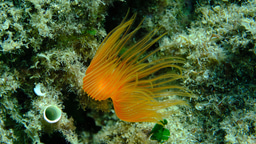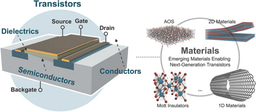Last night I went to a public lecture at the University of Surrey organised by the Royal Society of Chemistry. Professor Ian Wilson spoke on the topic: “Mapping the Phenome: The analytical chemistry of life”.
I receive email alerts of talks like this, and was alerted by the fact that this was a topic that I was interested in (I have a past as a natural products chemist, and I edit quite a lot of metabolomics protocols), and that it was going to be happening in Guildford (which is closer to where I live than London is!).
The first comment to make is that this was a public lecture, so it was pitched at the level of an intelligent, interested person who had not necessarily had any formal scientific training. This talk was definitely a success; whenever I looked at the other people around me they were attentive and smiling.
The title of the talk mentions the phenome which, I suppose, looks at different phenotypes (as apposed to genotypes). As we know, organisms are somehow a product of their genome and their environment, and the point where I laughed and laughed was when he referred to the compounds that the organism is exposed to as being the “exposome”.
One part of the phenotype of an organism is its metabolome, and that was the main focus of the talk. The title could equally easily have been: “Metabolomic analysis of urine” or perhaps “Pisse prophets of the past, present and future”.
Professor Wilson had a wooden rack for screw-top test-tubes which he opened and sniffed during the first part of his talk. He concluded this act by drinking one of them! While they all looked they might possibly be urine, they were in fact: coffee, pepsi, two strengths of tea, and scotch. He drank the scotch, apparently.
For the rest of the talk, he showed a lot of NMR spectra from urine samples of mice, rats and humans:
… and Principle Component Analysis plots:

I know, I know, it is actually from a protocol for NMR of plants, but it is the nicest image that I can find in our content that looks like what Prof. Wilson showed in the talk.
At no point did he get bogged down with how the samples were prepared, what NMR was, or even what principle component analysis involved. What he emphasised was pattern recognition, and how you could start to see patterns in the NMR spectra for different mouse types, treatment groups, or people with different diets.
There was a feeling of optimism that this type of analysis would ultimately result in clinicians being better able to choose for each patient the best drug out of an array of possible treatments (i.e. the one most likely to help, and least likely to cause harmful side effects), because clinicians would be able to determine which pattern-group the patient belonged to.




![Highlights of the BMC Series - [October] [2025]](https://images.zapnito.com/cdn-cgi/image/metadata=copyright,format=auto,quality=95,width=256,height=256,fit=scale-down/https://images.zapnito.com/users/840921/posters/759a1fb0-b10f-491e-bdff-940b3c1a87de_medium.png)


Please sign in or register for FREE
If you are a registered user on Research Communities by Springer Nature, please sign in